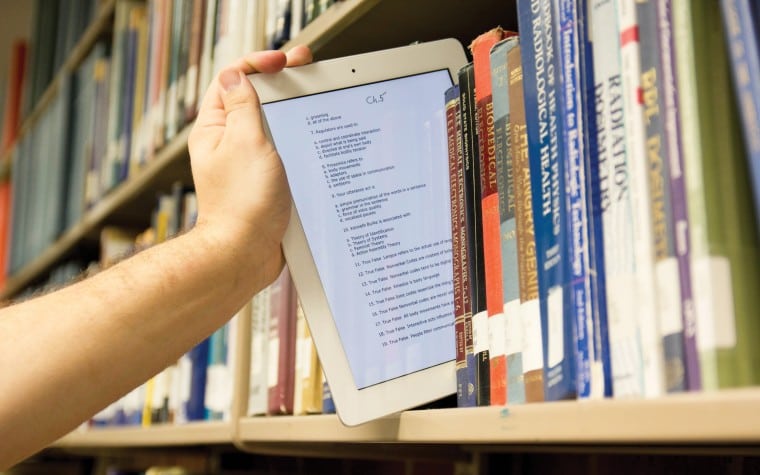
For as long as anyone can remember, textbooks have been a fundamental part of the educational framework, an essential foundation for instruction given to students for acquiring knowledge. For ages the basic model followed by textbook publishers: Pitch faculty with a hefty tome of knowledge for inclusion in lesson plans; charge students with an equally hefty sum; revise and update its content every few years as needed. But the last decades have seen a shift at colleges and universities—one that has more recently turned dynamic and progressive.
Rise of Digital Textbooks
Textbooks that can weigh up to a ton, these instruction resources used to dominate schools, colleges, universities, and educational institutions but now they are giving way to their digital counterparts. Within the broad strokes of that transition, the evolution of the textbook has mirrored every other industry. From 2010 to 2019, around 1.8 billion units of eBooks were sold, this demonstrates the continuing rise of electronic books.
Digital textbooks have been around for a while now, the COVID-19 pandemic has increased the rate of digitization from growth in the use of digital textbooks to enhanced demand for EdTech solutions. Digital textbooks are predominantly driving the market due to their lower cost, greater convenience, and wider access to the internet and digital platforms.
Digital textbooks
Digital textbooks also known as electronic textbooks, e-textbooks, digital textbooks, or e-texts, are electronic versions of a text that can be read on a desktop, mobile device, or E-reader device. They serve as the texts for a traditional face-to-face class, an online course or degree, or massive open online courses (MOOCs). Digital textbooks are a major component of technology-based education reform.
Let’s Get Digital
It is not only about what learning should look like in the 21st century but also how affordable it can be made. The way textbooks are bought and sold is changing with serious ramification in higher education — Digital-first, open source, subscription. The matter of the rising costs of textbooks, especially in college and university level, a single textbook which can have a price tag of anywhere between Rs2000- Rs7000 INR. Which is not practical for most students they may not use the textbooks again or these textbooks could become revised or outdated quickly. Therefore, it has given way from analog to digital, many students have turned to rent-a- textbook services or bought cheaper electronic textbooks instead.
Interactivity and Collaboration
The use of digital textbooks offers convenience in reading as the content is downloadable and viewable across multiple devices. Digital textbooks are enabled with interactive features such as audio, videos, highlighting and annotating tools, audio translations, and interactive case studies. Some digital textbooks have an added collaborative feature in which students and teachers can share, highlight, annotate, and ask questions to each other, which are not offered in physical textbooks.
Navigation Tools
The rise in exposure to computers and mobile phones has familiarised students with navigation tools enabling them to locate and search for information quickly in any e-textbook. Unlike physical textbooks, navigation tools aid students to streamline information by easily linking content throughout the digital textbook.
Real-Time Updates.
Within a few years printed versions of educational resources and materials tend to go outdated, which creates a barrier for students as they need to keep up with what is current on the topic and be prepared to synthesize recent developments. Which leads to a prolonged wait for printed revised editions. What makes an online textbook practical is the relevance of information. This is where a digital textbook has an upper hand over a physical textbook, it can be updated in real-time, resulting in a more versatile learning resource that changes based on the availability of new information.